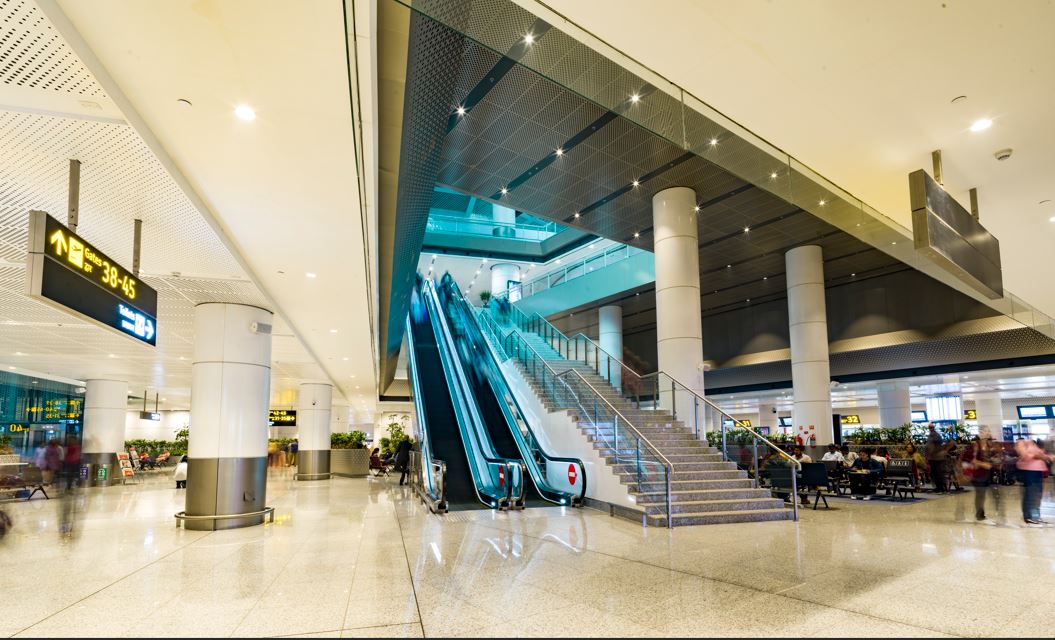
As urbanization continues to accelerate, the need for efficient transportation systems in buildings is more pressing than ever. Vertical and Horizontal Transportation (VHT) systems, including elevators, escalators, travelators and moving walkways, play a crucial role in enhancing mobility within structures. The integration of smart technologies into these systems promises to revolutionize how people navigate complex environments, making mobility not only more efficient but also safer and more user-friendly.
Vertical transportation refers to systems that move individuals between different levels of a building, primarily through elevators and lifts. Horizontal transportation encompasses systems that facilitate movement along the same floor, such as escalators and travelators. Both forms of transport are vital in ensuring smooth transitions in high-traffic areas like shopping malls, office buildings, hospitals and airports.
However, traditional VHT systems often face challenges related to energy consumption, maintenance and user experience. To address these issues, the integration of smart technologies is essential.
Smart technologies enhance VHT systems by optimizing performance, improving user experience and increasing operational efficiency. Here are some key innovations shaping the future of VHT:
The Internet of Things (IoT) allows for real-time monitoring of VHT systems. Sensors can detect when equipment requires maintenance, reducing downtime and enhancing safety. By analyzing usage patterns, operators can also optimize traffic flow, ensuring that elevators and escalators are available when and where they are needed most.
In light of recent health concerns, touchless call features have gained popularity. These systems allow users to summon elevators and escalators without physical contact, minimizing the risk of spreading germs. Motion sensors and smartphone applications can enable users to operate these systems with a simple wave of the hand or through their devices.
Artificial intelligence can analyze data from VHT systems to predict peak usage times and adjust operations accordingly. This predictive maintenance not only enhances efficiency but also extends the lifespan of the equipment, reducing operational costs.
Modern VHT systems can be designed to consume less energy. Innovations such as regenerative drives, which capture energy during braking, can significantly reduce power consumption. Smart technologies also enable better energy management, allowing buildings to optimize their overall energy use.
Smart technologies can provide personalized experiences for users. For example, mobile apps can inform passengers of wait times, available capacity and even suggest the best route through the building. Enhanced lighting, wayfinding displays and real-time updates can further improve the overall experience.
The future of vertical and horizontal transportation is set to be defined by seamless mobility, where users can transition effortlessly between different modes of transport. By integrating smart technologies into VHT systems, buildings can become more user-centric, responding dynamically to the needs of their occupants.
GEMS has consistently demonstrated its commitment to advancing VHT systems, assisting clients in modernizing their equipment while enhancing performance within existing constraints. With expertise in planning, engineering and inspection of VHT systems, GEMS stands out as a leader in the field. The company manages an impressive portfolio, including a travelator stretching 113 meters and nearly 300 vertical and horizontal transportation systems. GEMS’ dedicated team of engineers excels in tackling the unique challenges posed by VHT projects of varying size, scope and complexity. Their innovative solutions, such as touchless call features, not only improve user experience but also contribute to safer, more efficient transportation systems.
In conclusion, the future of vertical and horizontal transportation lies in the integration of smart technologies that prioritize efficiency, safety and user experience. Revolutionizing vertical/horizontal transportation with smart elevators, escalators and travellators integrating into IoT, AI and energy efficient technologies for seamless mobility, optimized traffic flow and upto 30% savings.
If you need any services, drop us a mail at Rohitkumar.Singh@gmrgroup.in or get in touch with us at +919717199753.